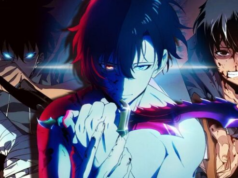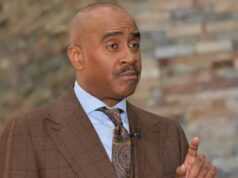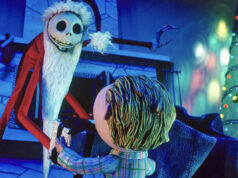By the 1930s, Douglas Fairbanks was in his 50s and had decided 1929’s The Iron Mask would be his last swashbucling adventure. It was time for a new cinematic hero to emerge. The silent era was over and cinema now had a voice. Just as every modern star has relies on an action based franchise, so the Thirties leading man tried his hand at a swashbuckler. There were a number of stars vying to contend for Fairbanks crown including his son, Douglas Fairbanks Jr. The most successful though were Errol Flynn in and Tyrone Power.
The Swashbuckler in the 30s
Leslie Howard had a go as The Scarlet Pimpernel (Harold Young 1934). Ronald Colman and Fairbanks Jr crossed swords in The Prisoner of Zenda (John Cromwell 1937). The Musketeers rode again in a new version of The Man in the Iron Mask (1939) courtesy of Frankenstein director James Whale. Another tale by Alexandre Dumas, The Count of Monte Cristo, had been filmed in 1934 with Robert Donat as the vengeful Edmond Dantes.
Errol Flynn and Michael Curtiz
However it was Errol Flynn who proved to be the natural successor to Fairbanks. Captain Blood (Michael Curtiz 1935) saw Flynn starring as Peter Blood, an Irish doctor sent to the New World in slavery for treating a rebel soldier’s wounds. Flynn’s struggle to deliver a line of dialogue failed to diminish his charisma. There was a wounded quality that belied his cockiness and audiences love a rogue.
Olivia De Havilland helped as his love interest. The two brought the best out of each other and had considerable chemistry. They were cast in seven films together with Flynn always the roguish charmer with a strong sense of right and wrong and De Havilland usually the uptight lady appalled at his coarseness but secretly up for it.
Warner Bros. brought Curtiz, Flynn and De Havilland back for The Adventures of Robin Hood (1938). Owing much to Allan Dwan’s Robin Hood (1922), Curtiz’s movie filmed in glorious Technicolor is arguably the high point of the swashbuckling genre. Flynn makes for a tougher Robin than Fairbanks, though he retains his predecessor’s playfulness and thankfully keeps the jolly prancing to a minimum.
Curtiz and Flynn teamed up again for another pirate tale The Sea Hawk (1940). Flynn spent the rest of the 40’s starring in war movies like Objective Burma (Raoul Walsh 1945) or dramas like That Forsyte Woman (Compton Bennett 1949), save for a turn in 1948’s The Adventures of Don Juan (Vincent Sherman).
By the 50’s Flynn was a spent force. Drink had taken its toll on his health and he seemed far older than his years. There was an attempt to recapture some of his old swashbuckling glory in The Master of Ballantrae (William Keighley 1953) but Flynn’s time was over.
Tyrone Power in the 1940s
Just as Flynn followed Fairbanks by playing Robin Hood, Power played another of Fairbanks most famous roles, Zorro in a lavish remake of The Mark of Zorro (Rouben Mamoulain 1940). Though he lacks Fairbanks athleticism Power handles a sword with panache. Power had another hit with the pirate film The Black Swan (Henry King 1942) though never quite matched these two films with others like Captain from Castille (King 1947).
Cinema Gets Biblical in the 1950s
Though there were occasional successes, notably the hugely entertaining The Flame and the Arrow (1950)with an acrobatic young Burt Lancaster, the swashbuckler went out of fashion in cinemas. Cinemascope had been invented to attract audiences away from their television sets and big-budget religious epics like Ben Hur (William Wyler 1959) became the studio breadwinners.
Ironically the swashbuckler was kept alive by television. The Adventures of Robin Hood (1955-60) starring Richard Greene became a huge success. A fresh-faced Roger Moore got his big break in Ivanhoe (1958-59). Television shows based around the adventures of William Tell, Sir Lancelot and Sir Percy Blakeney aka The Scarlet Pimpernel all quickly followed.
Modern Swashbucklers include Cary Elwes, Johnny Depp
In 73, Richard Lester’s sublime The Three Musketeers managed to parody the genre while also providing plenty of stunning swordfights and the best set of Musketeers in Michael York, Oliver Reed, Frank Finlay and Richard Chamberlain. Even better was Lester’s Robin and Marian an elegiac farewell to the age of chivalry with a remarkably tender performance from Sean Connery as an aging Robin Hood.
Like the western, the swashbuckler turns up every so often to remind us how good it can be, but they are occasional happenings. Nobody has followed in the footsteps of Fairbanks and Flynn by dedicating a part of their career to them. There have certainly been actors who have suggested they could do so.
Cary Elwes was a charming throwback to the old days in The Princess Bride (Rob Reiner 1988). There was the slightly daffy Christopher Lambert in Highlander (Russell Mulcahy 1986). Zorro returned again in the spirited form of Antonio Banderas in The Mask of Zorro (Martin Campbell 1998) and Johnny Depp wins the popular vote for his prancing performances in The Pirates of the Caribbean movies.
An unusual contender would be John Malkovich who showed considerable panache in his closing duel in Dangerous Liasons (Stephen Frears 1988) and who’s embittered Athos was the best thing about Randall Wallace’s The Man in the Iron Mask (1998). Also a left field choice, but an actor who shares with Fairbanks a natural physical athleticism is the B-movie star Bruce Campbell, whose cult TV show Jack of All Trades (2000) deserved a wider audience than it received.


















